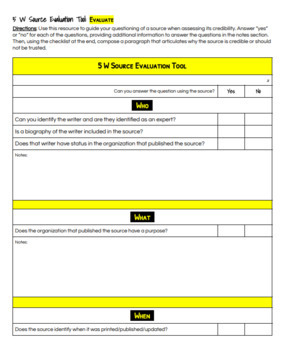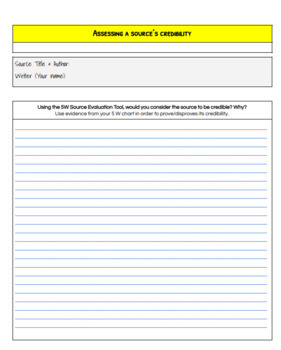5 W's - Source Evaluation Tool; Evaluating A Source's Credibility
- Google Docs™

Description
This product can be used for any classroom/subject where a research paper is assigned and/or a classroom where students need to evaluate a source's credibility/trustworthiness. Examples: argument or informational-based research essays, DBQ's, etc.
Product consists of:
-5 W (Who, What, When, Where, Why) Source Evaluation Tool with prompting questions and space for students to write notes about the trustworthiness of a source
- Checklist for identifying/evaluation a source's credibility & trustworthiness before writing an essay
-4 Articles (Examples of REAL and FAKE news articles for students to practice using both of the provided/attached source evaluation tools)
-Mini Assessment: Attached notepad for students to reflect on which of the attached sources are credible & explain why or why not. Use student responses to assess students' understanding of the following concepts:
- Read various articles & determine the source's credibility prior to conducting real research before writing an essay
- How to use and complete the 5 W Source Evaluation Tool
- How to utilize the attached checklist & evaluate the following source areas: identification, appearance, and audience
- How to explain why a source is or is not credible
-Bookmarks for each component of the document for easy transition between sections





